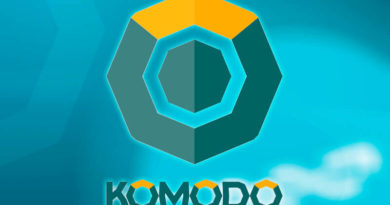ThorChain (RUNE): Revolutionizing Decentralized Finance
Did you know you can trade Bitcoin for Ethereum directly without using wrapped tokens or exchanges? ThorChain’s protocol makes cross-chain swaps instant, cutting out the middlemen. It launched on mainnet in 2022. Founded in 2018, it uses RUNE to connect blockchains like Bitcoin and Ethereum, making transactions quicker and cheaper.
ThorChain’s network runs on Tendermint consensus and the GG20 security system for efficiency and safety. Users get rewards by staking RUNE or adding liquidity. Its open-source design boosts transparency. This innovation is changing how people trade crypto assets worldwide.
Key Takeaways
- ThorChain enables direct Bitcoin-to-Ethereum swaps without intermediaries.
- RUNE acts as a bridge between blockchains in liquidity pools.
- Uses Tendermint and GG20 TSS for security and efficiency.
- Rewards users with staking and liquidity incentives.
- Open-source protocol ensures transparency in decentralized finance.
Understanding ThorChain (RUNE) and Its Mission in Cryptocurrency
ThorChain (RUNE) was launched in 2022. It tackles a big problem in blockchain technology: scattered liquidity across different cryptocurrency networks. Its goal is to link these isolated worlds, starting in 2018 under founder John-Paul Thorbjornsen.
He wanted to break free from relying on central exchanges.
The Genesis of ThorChain
ThorChain came from the Binance Dexathon. The founding team saw a need for better cross-chain work. They noticed that digital assets were stuck in their own worlds, needing third parties for swaps.
So, ThorChain created a way to move assets like Bitcoin and Ethereum directly between chains without middlemen.
Core Philosophy and Vision
ThorChain focuses on being decentralized and secure. It lets anyone trade freely, thanks to its Bifrost Protocol. This protocol makes cross-chain swaps smooth.
Unlike other tokens, ThorChain keeps assets real, protecting ownership.
RUNE Token Fundamentals
- RUNE has a total supply of 500 million tokens, with 251 million in circulation by 2023.
- It’s the main currency for all liquidity pools, needing a 1:1 match with other assets.
- Its holders get to decide how the network is run, earning 67% of income through staking and node work.
ThorChain uses a special consensus method to keep things secure. This lets users move cryptocurrency easily between chains. RUNE is key to the ecosystem’s growth, serving both as a utility and governance token.
How ThorChain’s Cross-Chain Architecture Works
ThorChain (RUNE) uses blockchain technology for easy cross-chain swaps. It doesn’t need wrapped tokens. Built on the Cosmos SDK and Tendermint, it focuses on security and speed. Leaderless asset vaults keep funds safe during transfers.
“Cross-chain swaps must balance speed, security, and decentralization.”
ThorChain swaps native assets directly. For example, swapping BTC for ETH uses RUNE in BTC-RUNE and ETH-RUNE pools. This method cuts out the middleman, making things simpler. The system uses Continuous Liquidity Pools (CLPs) for better trades, with fees based on how much the price moves.
- Core components include:
- Tendermint consensus for fast finality (up to 10 seconds per block)
- GG20 TSS protocol securing vaults with ⅔ validator consensus
- Bifrost protocol enabling asset transfers across 10+ supported blockchains
ThorChain’s nodes have strict rules to keep things secure. Each node must bond twice as much RUNE as its stake. This makes validators focus on keeping the network stable. Cross-chain swaps are done in under 20 seconds, beating Bitcoin’s 10-minute times.
The Role of RUNE in the ThorChain Ecosystem

RUNE is key to ThorChain’s decentralized system, making cross-chain swaps possible. It acts as a settlement layer, security anchor, and governance tool. This makes RUNE essential for all transactions and decisions.
RUNE as a Settlement Currency
Every swap on ThorChain uses RUNE as the base. Liquidity pools match it 1:1 with other cryptocurrencies. This means swapping BTC for ETH involves converting BTC to RUNE first, then RUNE to ETH.
This setup boosts RUNE’s value as more assets are added. It creates a network effect.
Security Mechanisms and Protocol Safety
Node operators stake RUNE to secure transactions. Validators must lock tokens worth twice the assets they secure. If a node is malicious, they lose their bond.
Governance Functions
RUNE holders vote on upgrades and new blockchain integrations. Challenges include supply growth and paused lending programs. These issues have increased sell pressure.
Proposals like a System Income Tax aim to stabilize RUNE. Decisions need 72 hours of community review to avoid quick changes.
ThorChain’s Unique Continuous Liquidity Pools
ThorChain’s continuous liquidity pools change how we think about decentralized finance. These pools make swapping assets between different blockchains easy. They use RUNE as a bridge, so you don’t need to use complicated smart contracts.
By linking every digital asset with RUNE, ThorChain creates a network for direct exchanges. This makes swapping any supported cryptocurrency straightforward.
The heart of this innovation is an automated market maker (AMM) design for cross-chain swaps. The AMM uses math to keep prices stable, even when assets move in and out. For example, big swaps might cost as little as 0.05% in fees, while regular swaps cost 0.30%.
This setup keeps costs low for users and rewards those who provide liquidity.
Automated Market Maker Design
ThorChain’s AMM focuses on keeping slippage low. It uses a hub-and-spoke system, pairing RUNE with other assets. This lets traders swap assets across chains without needing intermediaries.
The system’s fees adjust based on the size of the trade. This means smaller swaps pay less, while bigger ones help fund the protocol’s security.
Impermanent Loss Protection
Liquidity providers get impermanent loss protection that grows over 100 days. The protection increases linearly, reaching 90% at 90 days. This helps long-term investors stay safe from market ups and downs.
This approach encourages users to stay in the pools, reducing sudden withdrawals. Such withdrawals can destabilize decentralized finance systems.
Fee Structure and Economics
Providers earn rewards based on their pool stake. The Incentive Pendulum algorithm splits fees between traders and providers. This balance attracts both groups.
For example, a provider with 2% of a pool’s assets gets 2% of its rewards. This creates stable opportunities for yield farming.
ThorChain’s CLPs set new standards in decentralized finance. They combine security, efficiency, and risk mitigation. This makes yield farming a safe and rewarding activity for those who know what they’re doing.
Bridging Multiple Blockchains: ThorChain’s Competitive Edge
ThorChain’s cross-chain swaps change how we move assets between blockchains. They let us transfer assets directly, without needing wrapped tokens or middlemen. This is different from other platforms that only work within one system.
Its decentralized finance setup lets Bitcoin, Ethereum, and Binance Chain assets trade freely. This means no extra steps and less risk for users.
- Chain-agnostic architecture supports over 200 native assets, including BTC, ETH, and stablecoins.
- Self-correcting security protocols adjust multi-signature thresholds to counter threats.
- Continuous liquidity pools ensure 24/7 trading with no slippage, backed by RUNE’s 3x overcollateralization.
THORSwap has seen 2.7 million transactions and $1.85B in 14 months, showing its growing use. In March, it handled $540M, a 7x increase, proving it can grow. Unlike wrapped tokens, ThorChain’s swaps don’t need custodial risks.
Big exchanges handle $400B a month, but ThorChain’s decentralized model is safer and faster. It uses multi-signature and on-chain price feeds for public audits. This makes users confident in the bridge’s integrity.
This innovation makes ThorChain key to a more connected blockchain world.
Yield Farming and Staking Opportunities with ThorChain

ThorChain’s ecosystem offers diverse yield farming and staking avenues for users. Participants can choose roles like liquidity provider, node operator, or trader to earn rewards. Each role contributes to decentralized finance while generating returns. Let’s explore how to engage with these opportunities.
Liquidity providers add assets to liquidity pools, paired with RUNE tokens. For example, adding BTC requires an equal value of RUNE. Providers earn two streams: fees from swaps and protocol rewards. Popular platforms like Binance offer competitive staking APYs, such as 27% for PDEX holders. THORswap’s pools often yield higher returns but charge higher fees for transactions.
Node operators secure the network by bonding twice the pooled asset value in RUNE. Those meeting technical specs earn 66.67% of network rewards.
- Liquidity Provider Steps: Deposit assets on platforms like Binance or THORswap. Monitor pool performance to maximize returns.
- Node Operators: Bond 1 million RUNE to validate transactions. Rewards include block emissions and fees, but setup requires technical expertise.
- Risk Management: Lock-up periods on platforms like Gate.io protect against volatility, though RUNE’s market price fluctuations remain a risk.
Calculating returns involves balancing APY, fees, and impermanent loss. For instance, a $100,000 BTC-RUNE pool ensures equal value pairing, stabilizing liquidity. Users must compare platforms like Coinbase and RUNEvault for optimal locking periods and yield rates. THORChain’s model prioritizes security and uptime, making it a robust option for decentralized finance participation.
ThorChain’s Bifrost Protocol: Enabling Secure Cross-Chain Swaps
ThorChain’s Bifrost Protocol makes cross-chain swaps easy by linking blockchains into one network. It lets users swap native like BTC or ETH without needing wrapped tokens. The protocol keeps funds safe with its Threshold Signature Scheme (TSS) vault system.
- No intermediaries: Bifrost allows direct transfers between Bitcoin, Ethereum, and more without needing a third party.
- Real-time monitoring: It tracks blockchain events live to confirm transactions across networks.
- Security-first design: TSS splits keys, needing many nodes to agree on transfers.
| Feature | Description |
|---|---|
| Bifrost Architecture | Monitors 10+ blockchains including Bitcoin, Ethereum, and Solana |
| TSS Vaults | Distributes cryptographic keys to eliminate single points of failure |
| Transaction Speed | Finalizes swaps in seconds using atomic swap mechanisms |
| Supported Assets | Over 5,000 native assets processed through THORSwap |
Recent updates, like the September 2024 Cosmos SDK update, made Bifrost work better with Bitcoin Taproot addresses. This upgrade boosts how well different digital assets work together while keeping fees low. It also cuts down on risks for users through smart rebalancing.
With $356 million in liquidity, ThorChain’s protocol handles over 19 million trades every year. This shows it’s a reliable choice in a world of many blockchains.
Comparing ThorChain to Other DeFi Protocols
ThorChain (RUNE) shines in the crypto world by fixing issues in cross-chain swaps and DeFi. It’s different from central exchanges because it puts users in control and works across different systems.
ThorChain beats out Binance or Coinbase by not needing third-party custody. Users keep their private keys, and fees are clear. Swaps happen directly, without the need for wrapped tokens, making things simpler.
Centralized exchanges, on the other hand, hold your money in custodial wallets. This makes you vulnerable to hacks or government takeovers.
- Centralized exchanges: Require KYC, charge withdrawal fees, and limit cross-chain flexibility
- ThorChain: Permissionless access, native asset swaps, and no intermediary custody
ThorChain is better than decentralized exchanges like Uniswap for cross-chain swaps. Uniswap only works with Ethereum assets, but ThorChain lets you swap Bitcoin, Binance Chain, and more directly. It also has continuous liquidity pools, which means less slippage compared to DEXs.
ThorChain’s strength comes from its governance and security. Validators stake RUNE to protect the network, and on-chain governance makes upgrades smooth. This is different from many DeFi projects where decisions are made by a few people. It also has a unique impermanent loss protection, which draws in liquidity providers.
ThorChain’s future plans include adding more blockchains and making things more efficient. These plans make it a top player in DeFi’s cross-chain future.
ThorChain Tokenomics and Market Performance

ThorChain’s RUNE token has a special model. Every $1 of non-RUNE assets needs $3 of RUNE. This makes RUNE more valuable as more assets join the network. Investors show their trust with premiums of 3x to 5x.
- Maximum supply: 500 million RUNE, all pre-mined at launch
- 90 active nodes securing $200M in BTC/ETH liabilities
- Annual token emission from the Reserve: 16% of remaining balance, currently distributing 4.28 RUNE per block
- Recent market data: RUNE dropped 44% in one week but maintains $50-60B weekly trading volume
ThorChain’s tokenomics link RUNE’s value to its ecosystem’s success. The protocol’s design boosts RUNE demand as more users join. Yet, its price stability is a risk, like Terra/Luna’s collapse.
RUNE’s inflation comes from mints outpacing burns. This is due to borrowers using new tokens to repay loans. Traders aim to break through $4.88. Crypto community discussions could keep RUNE’s premium if adoption grows.
Investors should watch both on-chain metrics and broader crypto trends. As THORSwap handles billions weekly, RUNE is key in decentralized finance’s growth.
Security Considerations and Risk Management in ThorChain
Managing risks is key for decentralized finance platforms. ThorChain (RUNE) has to deal with special challenges in keeping cross-chain transactions safe. Past issues and current safety measures guide how users and developers handle these blockchain technology risks.
Past Security Incidents and Responses
In 2021, ThorChain faced attacks by the Lazarus Group. These attacks hit liquidity pools hard, causing big losses. The team then tightened audits and started a 90-day plan to buy back RUNE with 10% of fees.
Some developers left, showing the need for clear governance. This made the community question the platform’s safety.
Continuous Auditing and Safety Measures
ThorChain now uses third-party audits and bug bounty programs to stay ahead of threats. It also has a node bonding system to keep validators motivated to keep the network safe. Yet, it’s not fully safe because of its small validator set.
This makes it vulnerable to legal issues. Decentralized finance platforms like ThorChain must innovate while staying legal to avoid trouble.
Users also face risks like price swings and not enough liquidity. For example, RUNE’s value fell by 26% in 2022. Experts say using stablecoins and growing the validator network can help reduce these risks.
The Future Roadmap of ThorChain Development
ThorChain (RUNE) is moving forward with big upgrades to boost its place in decentralized finance. A major step is the launch of THORChain V3 in December 2024. It will have a token burn and updates to the Cosmos SDK v50.
These changes aim to fight supply inflation. They also want to make cross-chain swaps safer and faster.
New features include adjusting fees for swaps, starting at 5 basis points. The network will also require 200% collateral for lending. A cap on derived assets will help reduce risks.
Community efforts like grants and programs for node operators will help grow the ecosystem. This support will help projects like ShapeShift’s integration.
- V3 Protocol Enhancements: Enhanced cross-chain interoperability and reduced transaction costs
- Economic Adjustments: 50% of system income redirected toward RUNE buybacks starting in 2025
- Security Upgrades: GG20 Threshold Signature Scheme (TSS) for liquidity pool protection
ThorChain’s roadmap focuses on solving supply inflation with RUNE burns. By 2025, a 72-hour dissent period will be added for big economic changes. This ensures governance stays decentralized.
Q4 2024 data shows the network’s growth. Affiliate earnings jumped 256% to $11.4M. Daily cross-chain swaps hit $91M. These numbers show the network’s strength, even with market ups and downs.
Future swaps will have better liquidity pools and less risk. A System Income Tax and POL Savers Match will help stabilize RUNE’s price. By mid-2025, old liabilities will be turned into tokens, giving holders new options.
These moves aim to make ThorChain a top player in blockchain tech. They hope to make decentralized finance more mainstream.
Conclusion: ThorChain’s Position in the Evolution of Decentralized Finance
ThorChain (RUNE) changes the game in decentralized finance by linking different blockchain networks. It has processed $96.6 billion in trades, thanks to its Continuous Liquidity Pools. These pools keep prices stable for big deals.
Recently, ThorChain saw a 300% jump in weekly volume and RUNE’s price rose by 22% to $1.63. This shows its growing importance in the crypto world. With a market cap of $574 million and TVL of $223.2 million, it tackles blockchain fragmentation. This makes swapping between Bitcoin, Ethereum, and others easy.
Staking RUNE helps secure the network and offers rewards. It has 95 validators with a $106.6 million bond. This model lets users help decide on upgrades, following DeFi’s core values.
Real-world use is shown by Ledger Live’s $122 million in swaps. This proves the need for cross-chain liquidity. ThorChain’s work in blockchain interoperability makes it a key player in DeFi’s growth.
ThorChain’s success depends on growing securely and keeping up with regulations. It has 127,400 users and 45.7 million swaps, handling all kinds of transactions. Despite market conditions, its tech could link traditional and decentralized finance, making global financial tools more accessible.
As cross-chain solutions improve, ThorChain’s innovations could change how value moves across borders. This could solidify its role in DeFi’s next phase.




